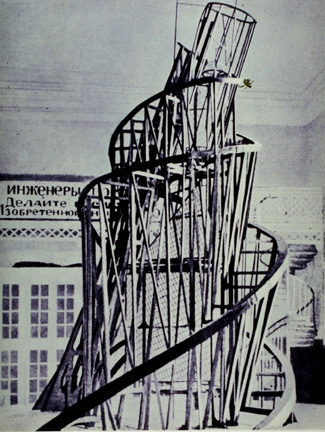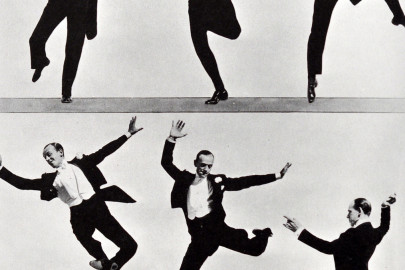Steel yourself for some uneasy listening this week, as Mahlerman guides us through Futurism and ‘Machine Music’…
Late in 1917, with the slaughter of Czar Nicholas and his family a few months away, and the Bolshevik Revolution in full swing, Sergei Prokofiev introduced his Haydnesque Classical Symphony to the world. This delightful, classically proportioned piece was a world removed from the barbaric music that had become his calling card, and which he continued to produce for the next decade. Futurism was enjoying an artistic and social vogue, influencing the arts and architecture, literature and gastronomy and, to a lesser extent music. Much of it is almost unlistenable – Prokofiev’s ballet The Steel Step is pretty harsh, so too his 2nd and 4th Symphonies – but his astringent imagination is never far away, nor his brilliant gifts as a caricaturist, but somehow he never quite touches our hearts, except perhaps in the very last scene of Romeo & Juliet, which usually gets me going. Here, from 1915, the tamping, pulsating Dance of the Pagan Monsters from the Scythian Suite.
The French composer Edgard Varese was invalided out of the French army in 1915 in his early 30’s, but by that time he had been taught by d’Indy, Widor and Roussel, and had met with Richard Strauss, Debussy and Busoni, all of whom helped further his career as a musician. This pioneer in sound left France for New York soon after his army discharge, but public interest in experimental music was limited, and he became an increasingly isolated figure. In the mid-20’s he produced a piece called Integrales, in which barbarity, and the taming of barbarity, can be heard in the same work. Here, we have Ionisation from around 1930, composed exclusively for percussion instruments. A surreal dreamscape is created by snare-drums, claves, bongos, wood-blocks and maracas, against a mobile backdrop of the deep, resonant tamtam, and the lighter, percussive military drum. Toward the end we hear bells, a piano, and a glockenspiel – but there is no melody, nor any need for one. You will paint your own pictures when you hear the eerie whine of two sirens – cops in New York? Or a primeval forest at night?
One of the most notorious works of the 20’s was The Iron Foundry by the Russian Alexandr Mosolov. The importance attached to the factory worker in Russia following the Revolution found expression in the movement known as Constructivism, the purpose of which was to create a link between the visual and aural arts, and machine production – giving birth to the term ‘Machine Music’. Mosolov had a big success with the piece, but later fell foul of the Soviets, was thrown out of the Composers Union, and exiled in the Gulag, the fate of many artists and intellectuals. If you can take your fingers out of your ears for a moment, you can listen-out for the ‘steel sheet’ and the anvil, both clearly audible.
Paris in 1917 was an artistic hothouse and six young composers decided to call themselves Les Nouveaux Jeunes. They later became know as Les Six and one of their number, the Swiss Arthur Honegger had a talent which rather set him apart from his friends, and he quite soon left the group to follow his own path. We heard part of his wonderful third symphony on Lazy Sunday earlier in the year, but today we reflect on one of his major passions, turned into art – his ‘mouvement symphonique’ Pacific 321, a description-in-sound of a train journey across America. ‘I have always loved locomotives passionately’ he once said memorably ‘For me they are living creatures and I love them as others love women or horses’. There is no record of what Mrs H, the gifted French pianist Andree Vaurabourg, thought about this.












“You will paint your own pictures when you hear the eerie whine of two sirens – cops in New York? Or a primeval forest at night?”
In my mind’s eye i’m imagining a one-man-band being pushed down a metal fire escape 🙂
I like the idea of there being a direct link between the steam technology of Mosolov’s ‘machine music’ and the computerised ‘machine music’ of Kraftwerk
Fascinating post, Mahlerman. I recently purchased a job lot of old 78 rpm records. Amongst the recordings of Paul Robeson and Caruso, I was surprised to find a copy of Mosolov’s Steel Foundry (that’s what it’s called on the disc, though apparently the title has been variously translated – in some cases called Mechanical Ballet, or simply The Factory). One review described this as “music of a metallic nightmare…”
The flip side isn’t easy listening either. Another piece of Soviet realism, Dnieper Water Power Station by Yuli Meytuss is a celebration of the building of a 167 foot high dam and power station in 1932. The largest hydro-electric power plant in Europe, this was a great source of pride to the Soviet state. It’s scored almost exclusively for percussion.
‘Steel yourself for some uneasy listening this week, as Mahlerman guides us through Futurism and ‘Machine Music’…
That opening did not auger well for this reader. So it immediately became a toss-up between reading the post, listening to the clips, and going out into driving rain and cleaning out the chicken coop. The coin came down if favour of Mahlerman and against six disconsolate hens. I’m glad it did. Marvelous stuff, and the influences on, and provided by, Shostakovich seemingly present throughout.
Prokofiev’s Scythian Suite packs quite a punch, and if ever a camera on a conductor is justified it has to when it’s Valery Gergiev. I imagine that experienced, grizzled, heard it all, driven half-mad by tinnitus, orchestral players find many conductors quite good, ok, not bad, reasonable, acceptable. But with Gergiev ? I wonder if it’s a case of love him or hate him, be inspired to attain unknown interpretive heights or to harbour regret that a career in accountancy wasn’t followed. Blistering, brilliant – I could watch him all day, and listen at the same time. I’m quite clever that way.
The Honegger is wonderful. It appeals massively to this steam engine anorak. I wonder if it had any influence on Britten when he set about the classic Night Mail?
“Ionisation” was, I believe, a major influence on the young Frank Zappa. He found it in his local library and subsequently corresponded with Varese. To the end of his days he would wax lyrical about the importance of that piece of music to him, and if you’ve ever heard The Yellow Shark or even his horrific Synclavier music from the 80s then the link is clear.
A few years back I saw a ballet by Shostakovich @ The Bolshoi New Stage called “Bolt”… it was about a factory where a bolt had gone missing. Very avant garde, very much machine music and I really enjoyed it. Certainly it was infinitely better than his rancid opera, The Nose, from around the same period I think.
I have an old Melodiya CD of radical 20s soviet composers. Interesting stuff, but it doesn’t get too much rotation.
Great stuff, as ever. The Honegger is an old favourite. Mahlerman, how about doing more train music? I’m no trainspotter, but Britten’s Night Mail has already been mentioned, there’s ‘Train to Johannesburg’ from Kurt Weill’s Lost in the Stars, not to mention the Copenhagen Steam Railway Galop by Hans Christian Lumbye (the Strauss of the North – I’m not making this up, by the way). And many more, I’m sure.